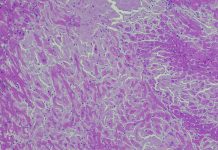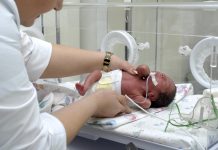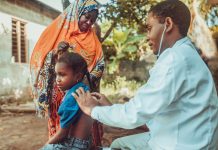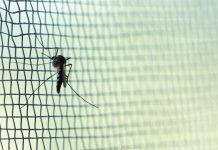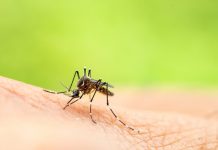Gillian Molloy, Director of Market Access at AscellaHealth, examines the rare disease landscape in the UK, including progress in improving patient care and challenges in diagnostics and the development of new treatments
Rare conditions currently affect fewer than one in every 2,000 people across the UK, but collectively, one in 17 people will be affected at some point in their lifetime.
That’s 3.5 million people living with over 7,000 known conditions. More are being discovered every year thanks to advances in areas such as genomics – 80% of rare diseases have an identified genetic origin.
Since its first Rare Diseases strategy in 2013, the UK Government has made strides in understanding, managing, and treating rare diseases. The 2021 UK Rare Diseases Framework further expanded the vision, focusing on accelerated accurate diagnosis, heightened awareness amongst professionals, streamlined care coordination, and enhanced treatment access. This was bolstered by the subsequent Rare Diseases Action Plan, which contains actionable steps toward further improved patient care.
But for those one in 17 people affected, the challenges still extend far beyond their symptoms, which can be life-limiting. Because each rare condition impacts relatively small patient populations, approaches to diagnosis and treatment still lack a coordinated approach.
Diagnostic odyssey
The initial challenge is accurate diagnosis. Some rare diseases exhibit symptoms that are shared with more common conditions, often leading to multiple misdiagnoses or frustratingly delayed diagnosis. This ‘diagnostic odyssey’ can significantly impact a patient’s – and their families’– quality of life and mental and physical wellbeing. According to Rare Disease UK, the average person with a rare disease speaks to five doctors, with the time for receiving a correct diagnosis being four years.
So, it’s encouraging to see the progress made so far in moving towards quicker diagnosis through initiatives like the Genomics England Clinical Research Interface and improvements to newborn screening – particularly important as 75% of rare diseases impact children – meaning that for some diseases, diagnosis is now possible early in life.
The key to success will be the effective use of data, collaboration, and education across the system and with healthcare professionals worldwide to better understand the rare diseases landscape. Of course, not every healthcare professional will be able to be fully knowledgeable in every one of the thousands of rare diseases, but by continuing to advance the use of data and working with other bodies who directly support those with rare diseases – such as Rare Diseases UK – on resource sharing, then diagnosis times can be improved.
It’s also important to note the findings of Genetic Alliance UK’s ‘Good Diagnosis’ report – the findings demonstrate the significant emotional and mental health impact of the diagnostic odyssey. “A good diagnosis can only be achieved if people with rare conditions have access to good information and feel supported from the beginning of their journey to the point of their diagnosis and beyond,” the report states.
The challenges for patients do not end at diagnosis. They then must navigate a healthcare system set up for more common conditions and an evolving treatment landscape.
Treating rare diseases
Drug and therapy development for rare diseases have seen impressive advancement in recent years. It’s an exciting time for this field – particularly in cell and gene therapies that could provide potentially curative treatments for a growing scope of diseases and previously untreatable conditions.
The UK has the third largest cluster for cell and gene therapy production worldwide. But as treatments come to market, there are complexities around reimbursement, accessibility, and affordability.
Although the Innovative Medicines Fund (IMF) has been set up to fast-track promising treatments, patient access remains a challenge. This is largely due to the high costs associated with these therapies, especially for the UK’s publicly funded healthcare system.
The National Institute for Health and Care Excellence (NICE) evaluates the cost-effectiveness of all products using cost-benefit analyses. Although NICE adjusted its guidelines in 2022 to provide more flexibility for specialist committees to consider diverse evidence sources (data collection is tricky with small patient populations), including real-world data and patient experiences for rare diseases which consider the unique circumstances of these conditions – reimbursement decisions involving treatments for rare diseases aren’t automatic.
This is where the drug developers themselves can play an important role by putting their market access strategies front and focus from the product’s inception. It means thinking wider than the curative nature of the product to cover all the steps that will get a treatment to market.
A good step is to collaborate with a third-party expert who can provide end-to-end support for all aspects of commercialisation – for example, purchasing support, market access, supply chain logistics, distribution, fulfilment, and even an alternative funding model that enables treatment centres to spread the cost of rare disease therapies over a longer period of time.
Accessibility and availability
Keeping market access in mind at all times will deliver the best possible experience and outcomes for patients.
There is also a need for consideration from providers on the overall value of a therapy. While a high upfront cost, a disease-altering – and often one-off – treatment can offset long-term medical costs and resource utilisation if a rare disease therapy is not given, especially if the cost is spread over time. The wider socioeconomic benefits of the patient potentially being able to recover and re-enter education and/or the workforce also need to be put into the equation.
In addition to cost, accessibility, and eligibility is a further area to tackle. Due to the small patient populations, undertaking a clinical trial that includes a range of patients from different backgrounds is challenging, and often, people will miss out on being enrolled in trials due to disparities in diagnosis and awareness. Also, medical expertise and treatment administration are often clustered to specific centres, potentially making it difficult for some patients to access.
There is some positive work being done here to increase the amount of data available on rare diseases to better target care. For example, the National Congenital Anomaly and Rare Disease Registration Service (NCARDRS) has committed to improving the quality, coverage, completeness, and transparency of national rare disease registration data.
This includes increasing data collection for people with rare diseases through a new web-based reporting system and exploring how NCARDRS and NHS DigiTrials – which provides secure data about people’s health and care to researchers for clinical trials – can work together to improve the findability of rare disease patients for suitable clinical studies.
Overall, the UK has seen some good progress in tackling the challenges associated with living with a rare disease and improving patient care. With exciting developments in new treatments and therapies only expected to increase, all stakeholders in the rare disease ecosystem must work together to boost awareness, increase collaboration, advance data collection, and advocate for treatment access for patients.
Contributor Details
Editor's Recommended Articles
-
Must Read >> Five rare diseases you never knew existed
-
Must Read >> Understanding Amyloidosis, a group of rare diseases
-
Must Read >> Examining the burden of rare diseases in the US




